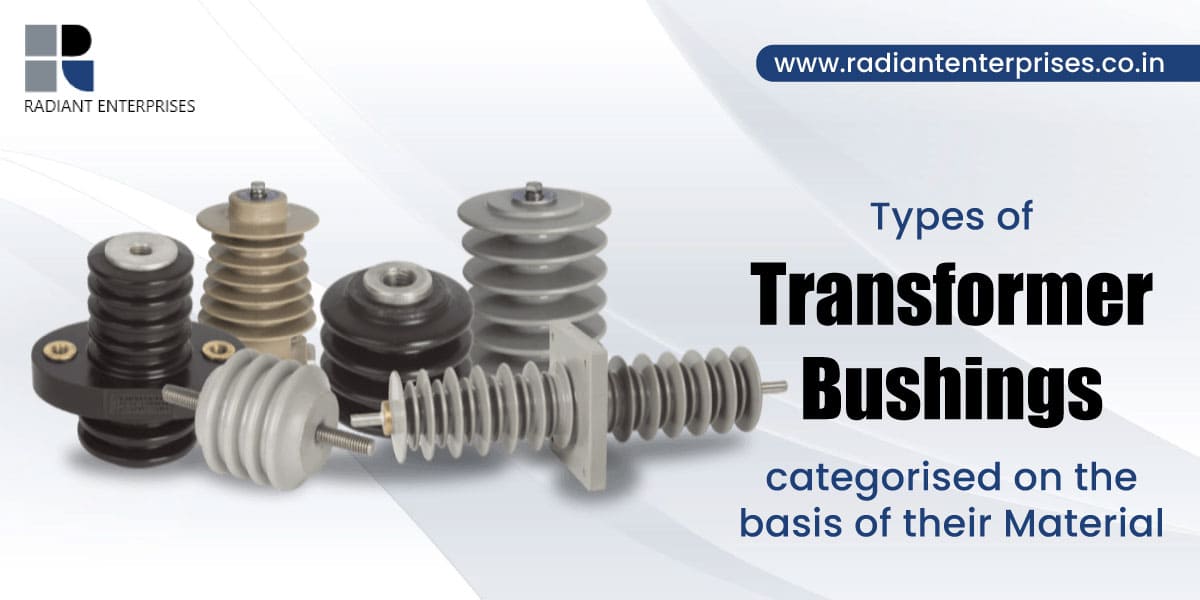
Fill all information details to consult with us to get services from us

Material, production, and design all go into several varieties of transformer bushings.
Insulates the wire from the grounded transformer tank with an electrical bushing, allowing many conductors to flow through simultaneously.
Transformer bushings are a critical part. Load Tap Changer (40%) and Winding (14%) are the two other leading causes of transformer failure, according to the CIGRE WG-12 Report from 1983. (35%).
There are two basic varieties of EHV class bushings, each distinguished by a different combination of material, manufacturing process, and aesthetics:
The two most common varieties of transformer bushings are the subject of this essay. Specifically, the contrast between oil-impregnated and resin-impregnated bushings.
In the classic OIP transformer bushings technology, oil is used as the primary insulating medium for transformer bushings.
Moisture intrusion and oil leakage owing to damaged seals are two of several serious problems of oil-based bushings.
OIP transformer bushings, on the other hand, are more susceptible to lightning strikes and other conditions that could lead to an explosive failure. Additionally, overfilling horizontally mounted oil reservoirs might cause serious operating issues.
Even a short-lived OIP bushing might suffer irreparable damage if subjected to excessive operating temperatures.
Insulating liquid, such as transformer oil, treats and impregnates the core in OIP bushing.
Porcelain or some other form of insulation surrounds the core, and a similar insulating liquid to that used to seal the impregnation cavity fills that gap in between the two.
An oil level indicator and a test tap are included with every set of bushings. The overhead conductor and transformer winding are connected by a central stem that is usually constructed of copper.
RIP transformer bushings, a brand-new class of insulating material with improved thermal and electrical performance, have recently been created.
In transformer bushings made of RIP, the main insulation is a core coiled from paper that has then been impregnated with epoxy resin. This insulation's casting and curing processes are meticulously controlled.
An insulating envelope can be attached to a RIP bushing. The empty area can be filled up with the help of an insulating material like polyurethane foam, gel, etc., or insulating liquid.
OIP bushing technology differs significantly from RIP bushing technology in that the condenser cores in OIP technology are impregnated with transformer-grade mineral oil, which remains liquid throughout the life of the bushing, whereas curable epoxy resin is used in RIP bushings to impregnate the resin and form a solid condenser.
OIP v/s RIP transformer bushings will now be compared based on several criteria.
It's usually observed that RIP transformer bushings have lower Partial Discharge levels compared to OIP transformer bushings.
The Partial Discharge level in RIP transformer bushings is typically less than 2 PC. On the other hand, partial discharge is less than 5 PC in OIP transformer bushings.
RIP bushings have low Tan delta values.
RIP bushings have a Tan delta value of 0.35% or less. OIP bushings, on the other hand, typically have a tan delta value of 0.45% or lower.
A RIP bushing is classified under Class-E (that ranges up to 120 degrees C) by IEC standard 60137, but an OIP bushing is classified under Class-A (that ranges upto 105 degrees C).
Porcelain OIP transformer bushings weigh approximately half as much as composite RIP transformer bushings. Because of this, the handling, transportation, and installation of RIP bushings are made easier.
In addition, OIP bushings are more vulnerable to shipping, vandalism, handling, as well as installation damage.
To meet the requirements of IEEE 693-2005 standards, standard RIP transformer bushings types demonstrate high seismic performance. OIP transformer bushings, on the other hand, have very poor seismic and withstand capabilities.
There is a significant difference in mechanical strength between the OIP and RIP transformer bushings.
In comparison to OIP transformer bushings, the following are the benefits of using RIP transformer bushings during installation:
Compared to OIP transformer bushings, the RIP transformer bushings require fewer maintenance checks because they are free of oil and porcelain.
Non-flammable RIP transformer bushings are constructed without insulating oil. Because of this, it's a non-explosive bushing.
Insulation failure or arcing is a major concern with OIP transformer bushings, which increase the risk of an explosion. Due to the fragile nature of the outside porcelain envelope, the arcing might cause a large explosion.